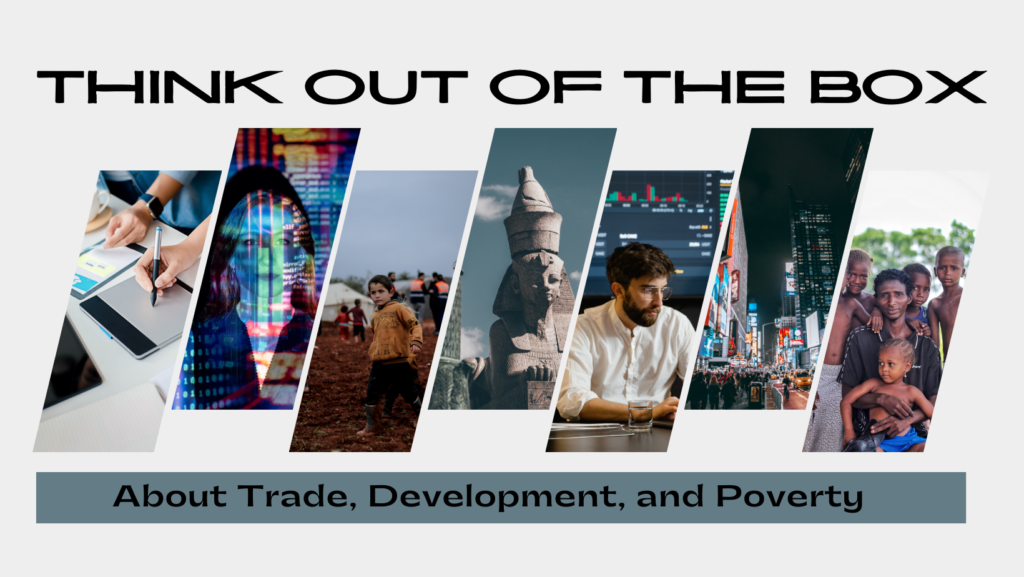1. Rethinking Trade for Inclusive Growth
The conventional view of trade often centers on the idea of comparative advantage, where countries specialize in producing goods and services they are most efficient at, leading to mutual gains through trade. While this theory has brought prosperity to many nations, it has also left behind significant segments of society, particularly those with lower skill levels or in vulnerable sectors.
To think outside the box, we must consider strategies that prioritize inclusive growth through trade. One such approach is to focus on value chains. Rather than merely exporting raw materials or finished products, developing countries can aim to insert themselves into global value chains by adding value at various stages of production. This not only creates jobs but also builds local capacity and technological know-how.
Furthermore, we can explore the concept of “fair trade” on a larger scale. Fair trade principles emphasize ethical production and trade practices that prioritize workers’ rights, environmental sustainability, and fair wages. Scaling up such principles in international trade agreements could lead to more equitable global trade practices.
2. Development beyond GDP
Traditionally, development has been measured solely by GDP growth, a limited perspective that fails to capture the complexity of human well-being. To truly address poverty and inequality, we must think beyond GDP and embrace holistic measures of development.
One innovative approach is the Human Development Index (HDI), which incorporates factors like education, healthcare, and income to provide a more comprehensive picture of a country’s development. By focusing on improving the overall well-being of a population, rather than just economic growth, governments can create policies that are more inclusive and sustainable.
Another concept worth exploring is the Gross National Happiness (GNH) index, pioneered by Bhutan. GNH takes into account not only economic factors but also cultural, environmental, and spiritual well-being. By prioritizing the happiness and well-being of its citizens, Bhutan has pursued a unique path to development that challenges the conventional growth-centric model.
3. Leveraging Technology for Development
The rapid advancement of technology has the potential to revolutionize development and poverty reduction efforts. To think outside the box, we can explore innovative ways to leverage technology for inclusive growth.
One such avenue is digital finance. Mobile banking and digital payment systems have the potential to bring financial services to remote and underserved populations, allowing them to save, invest, and access credit. This can empower individuals and small businesses, driving economic growth and poverty reduction.
Additionally, technology can play a crucial role in education. Online learning platforms and digital resources can provide access to quality education for people in remote areas, helping bridge the education gap and equipping individuals with valuable skills for the job market.
Furthermore, the use of block chain technology can enhance transparency in supply chains, ensuring fair wages and ethical production practices in the global trade of commodities such as coffee, cocoa, and minerals.
4. Sustainable Development and Environmental Conservation
A crucial aspect of thinking outside the box about development and poverty reduction is the integration of sustainability and environmental conservation into development strategies.
One innovative approach is the concept of “green growth,” which seeks to achieve economic growth while minimizing environmental degradation. This involves investing in renewable energy, sustainable agriculture, and eco-friendly infrastructure. By prioritizing sustainability, countries can create long-term development pathways that do not compromise the environment for future generations.
Additionally, the idea of “circular economy” is gaining traction. In a circular economy, products and materials are reused, repaired, and recycled, reducing waste and minimizing the environmental impact of consumption. This approach not only conserves resources but also generates new economic opportunities, particularly in the recycling and remanufacturing sectors.
5. Strengthening Regional and South-South Cooperation
Traditionally, development aid has flowed from wealthy countries to poorer nations, often with conditions and power imbalances. To think outside the box, we can explore alternative models of cooperation, such as regional and South-South cooperation.
Regional integration can lead to increased trade and economic cooperation among neighboring countries, creating economies of scale and fostering development in the region. Initiatives like the African Continental Free Trade Area (AfCFTA) demonstrate the potential of regional cooperation in boosting economic growth and reducing poverty.
South-South cooperation involves partnerships and knowledge exchange between developing countries themselves. This approach allows nations to learn from each other’s successes and challenges and implement solutions that are contextually relevant. It empowers countries to take ownership of their development agendas and reduce dependency on traditional aid.
6. Inclusive and Gender-Sensitive Policies
Thinking outside the box also requires us to address the gender dimension of development and poverty reduction. Women often face unique challenges and barriers that need to be addressed through inclusive and gender-sensitive policies.
Empowering women economically by providing access to education, healthcare, and credit can have a profound impact on poverty reduction. Women’s participation in the workforce and leadership positions can drive economic growth and foster more inclusive societies.
Moreover, considering the unpaid care work that women often perform, policies that support work-life balance and affordable childcare can enable women to fully participate in the workforce while maintaining family responsibilities.
7. Conflict Resolution and Peace building
Conflict and instability are significant barriers to development and poverty reduction. To think outside the box, we must prioritize conflict resolution and peace building as essential components of development efforts.
Innovative approaches include investing in conflict prevention and addressing the root causes of conflict, such as inequality, injustice, and resource scarcity. This may involve inclusive dialogue processes, reconciliation initiatives, and support for post-conflict reconstruction.
Furthermore, harnessing the power of art, culture, and sports can be unconventional but effective tools for promoting peace and social cohesion. These activities can bring communities together, bridge divides, and promote mutual understanding.


